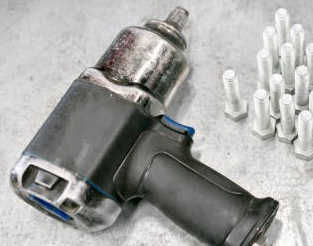The effects of oxidation

Introduction
Oxidation is a fundamental chemical process that occurs when a material, usually a metal, reacts with the oxygen present in the surrounding environment. This phenomenon can have various consequences, both positive and negative, depending on the application context. In the field of mechanics, oxidation can lead to corrosion problems, reducing the service life of components, but it can also be exploited to create protective layers through processes such as anodization. This document explores the effects of oxidation on different materials, with particular attention to mechanical and structural effects.
1. Effects of Oxidation on Metals
Metal oxidation is a complex phenomenon that depends on various factors, including the chemical composition of the metal, the surrounding environment (humidity, temperature, presence of salts, and other chemical agents), and the duration of exposure. The metals most commonly subject to oxidation include iron, aluminum, and copper.
1.1 Oxidation of Iron
Iron, when exposed to air and humidity, tends to oxidize, forming iron oxides, commonly known as rust. This process is highly damaging because rust is porous and non-adherent, facilitating further oxidative attacks and compromising the mechanical strength of the material.
| Oxidation Product | Chemical Formula | Mechanical Impact |
|---|---|---|
| Rust | Fe₂O₃·nH₂O | Loss of strength, increased brittleness |
1.2 Oxidation of Aluminum
Unlike iron, aluminum forms a protective oxide (Al₂O₃) that adheres firmly to the metal surface, protecting the underlying material from further oxidative attacks.
| Oxidation Product | Chemical Formula | Mechanical Impact |
|---|---|---|
| Aluminum Oxide | Al₂O₃ | Protective layer, increased durability |
1.3 Oxidation of Copper
Copper, when exposed to air and humidity, forms a greenish patina composed mainly of cuprous oxide (Cu₂O) and cupric oxide (CuO), which can provide some protection against further oxidation.
| Common Name | Chemical Formula | Description |
|---|---|---|
| Patina | Cu₂O, CuO | Protective, aesthetic layer |
2. Methods for Protection Against Oxidation
Various methods exist to protect metals from oxidation, varying depending on the material and the operating environment.
2.1 Protective Coatings
Protective coatings, such as paints, enamels, and metallic coatings, can prevent direct contact between the metal and the oxidizing environment.
2.2 Anodization
Anodization is an electrochemical process that increases the thickness of the natural oxide layer on the surface of metals, such as aluminum, improving corrosion resistance.
2.3 Passivation
Passivation is a chemical treatment that creates a protective oxide layer on the metal surface, reducing its reactivity to the environment.
3. Graphical Analysis of Oxidation
A graphical analysis can provide a visual representation of the effects of oxidation on various metals over time. Below is a table comparing the oxidation rate of iron, aluminum, and copper under standard environmental conditions.
| Material | Oxidation Rate (mg/cm²/day) |
|---|---|
| Iron | 0.05 |
| Aluminum | 0.01 |
| Copper | 0.02 |
Conclusions and Commercial Implications
Oxidation presents a significant challenge for the durability and reliability of mechanical components. However, understanding and managing this phenomenon can lead to innovative and competitive solutions. Companies in the mechanical and metallurgical sectors can benefit from the development of new materials and protection techniques, improving product reliability and reducing maintenance costs. Investing in research and development to optimize anodization, passivation, and protective coating processes will extend the lifespan of products.
Why Invest in Oxidation Protection?
Investing in oxidation protection is not just about prevention but a winning commercial strategy. Effective protection against oxidation can:
- Reduce maintenance and replacement costs: Fewer damages mean fewer repairs and replacements, leading to significant long-term savings.
- Improve product quality: Components that better resist oxidation maintain their mechanical and aesthetic properties longer, enhancing customers' perception of product quality.
- Increase competitiveness: Offering more durable products can be a significant competitive advantage, attracting new customers and retaining existing ones.
- Contribute to sustainability: Longer-lasting materials reduce the need for resources to produce new components, promoting a more sustainable and responsible approach.



